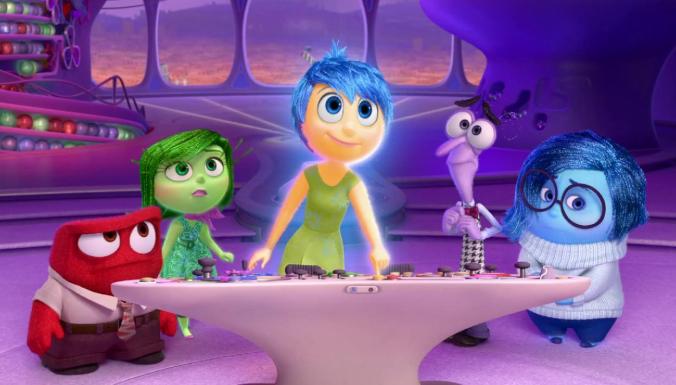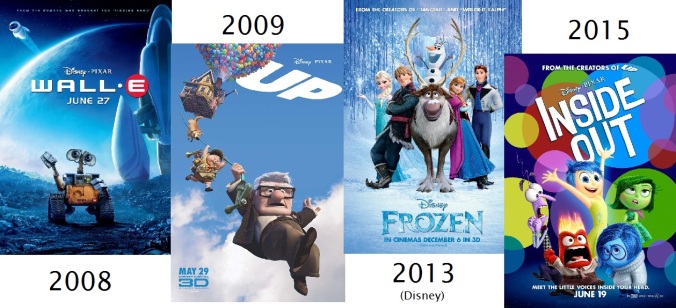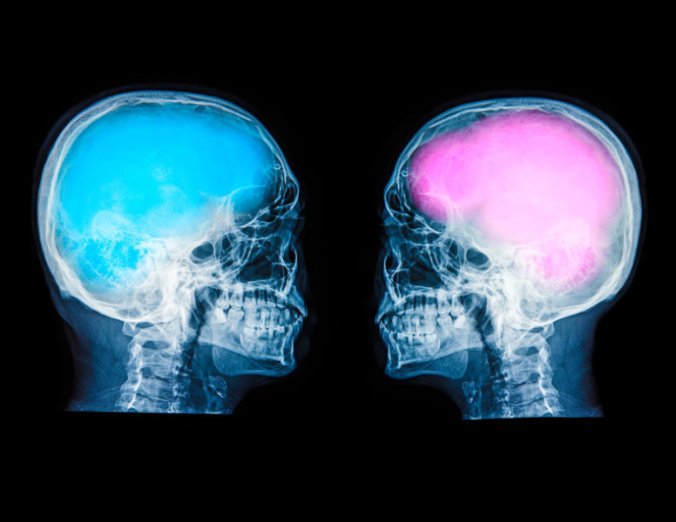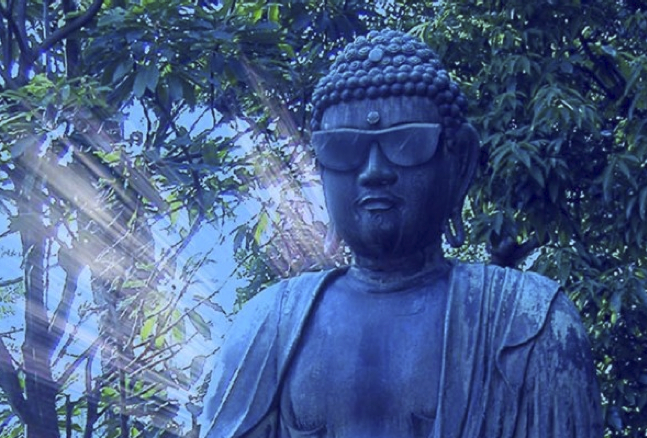My mum likes to remind me how, as a little kid, I cried in the movie Bambi when Bambi’s mother gets killed by the hunter. Looking back, it feels like it may have been one of my most salient developmental moments. Bambi was a kid just like me, a massive mummy’s boy just like me, and I probably didn’t have much of a concept of death up until that point. Maybe Bambi was the very first time I realised that loved ones don’t stay with us forever.

Shortly thereafter The Lion King came out, and because of my brother’s massive obsession, I was dragged to see it at the cinema three times. It’s hard to mount a compelling defence for staying home alone when you don’t even have armpit hair to back you up. For all my protesting though, the movie touched me deeply. I hated the dastardly Scar. I probably cried every single time I had to watch young Simba hopefully nudging the lifeless body of his father. (I recently re-watched The Lion King for the first time in over a decade, and I still cried when Mufasa died. Whatever. It’s sad!)
Seeing animals lose parents is distressing, and so is seeing evil triumph over good. These are very simple moral messages that anyone can relate to, even prepubescent kids. We’ll return to this point shortly.
Fast forward to 2015, and the latest children’s blockbuster is Pixar’s Inside Out. If you haven’t yet seen it yet, bookmark this page and go watch it ASAP. It received a rating of 98% on Rotten Tomatoes, plus it’s Pixar so you already knew it would be good. Also, spoilers be coming.
The film follows the development of an American girl named Riley from birth until the age of 11. That sounds kind of dull, and it possibly would be if it weren’t for the twist: Riley is only a surrogate protagonist. The real action takes place inside her brain, where a bunch of anthropomorphised emotions – Joy, Sadness, Fear, Disgust and Anger – caper and banter and ultimately control all of Riley’s thoughts via a “cognition” control panel.

The gang at the control panel: Anger, Envy, Joy, Fear and Sadness
The film colourfully explores other aspects of Ripley’s cognition such as memory formation and loss, abstract reasoning and dreaming. The narrative is delightfully engaging, but the most significant aspect of Inside Out is an implicit message it carries which is both surprisingly scientifically accurate and spiritually profound, as well as representing a major advancement in the broad moral history of children’s films. Before we get to what it is –
The broad moral history of children’s films
There are many ways in which humans are socialised and morally wired during their developmental years. Obvious influences include school, parents and religious teachings. However, it’s possible to overlook the significant role played by stories, including those told in TV shows and movies. Humans are powerfully predisposed to respond to stories. This is why they are heavily exploited in marketing and may account for why one death can be a tragedy when a million is just a statistic. The stories told in movies, and their moral messages, may truly affect people’s long-term world views.
For example, I grew up on a diet of Bambi, Captain Planet and Pokemon. These days I’m a vegetarian environmentalist with a weird compulsion for collecting sets of things. Coincidence, or something more significant?

Could they be any less subliminal?
If it’s true that children’s films can have a meaningful impact on moral development—and admittedly this is extremely difficult to demonstrate experimentally—then we might have more cause for optimism about the upcoming generation than we realise.
The popular children’s films of the past few decades (almost of them Disney) are extremely diverse in the situations and moral issues they address. Compare Sleeping Beauty with Peter Pan, The Little Mermaid with Aladdin, etc). For all their diversity though, a few underlying themes stand out to me as pretty much constant:
- There is a clear delineation between good and evil characters. There is never any doubt that Captain Hook, Ursula the Sea Witch and Jafar are baddies. They look evil and everything they do is evil. A motive isn’t necessarily needed for being a baddie; some characters just are that way.
- Old timey gender roles. This one is a bit obvious since movies are products of their times, but it bears consideration nonetheless. A heterosexual romance is almost always involved, it’s generally a male protagonist who saves the day, and it’s always happily and monogamously ever after.

Along with a slew of other moral values such as individualism and self-reliance, these are the messages that the previous generations grew up hearing. And, these are the generations now controlling governments and institutions the world over: governments that base foreign policies on a concept of evil baddies, and institutions that fail to see the justice in marriage equality.
Something happened in the past decade though to take children’s film morality in a radically new direction, and that something is largely Pixar. Check out the following major releases:

The issues explored in these films are so much more complex than those of 20th century Disney, it’s hard to overstate it. Compared to narratives based on good defeating evil and old timey gender roles, consider the messages these films might be sending:
WALL-E
Humans run the risk of rendering Earth uninhabitable, mindless consumption strips people of their humanity, artificially intelligence machines may one day possess every bit as much humanity as humans do—or conversely, they might enslave us through an innocuous mistake in their programming (see: the paper-clip maximiser and Wait But Why’s The AI Revolution)
Up
Even in the best case scenario of marriage and happily ever after, there will still be hardships such as miscarriages and death, if you’re not careful it’s possible to go your whole life neglecting to ever pursue your dreams, old people can also do interesting things, scientists tend to get tiresomely hung up on their life’s work
Frozen
Even loving healthy relationships can deteriorate because of personal burdens, there is such thing as moral ambiguity! (people can have reasons and experiences that lead them to destructive behaviour), there are also charismatic sociopaths to watch out for who can seem benign at first, girls can save the day just fine without the help of a prince
And now along comes Inside Out, taking things to a whole new level again by exploring one of the deepest moral and existential issues there is: neurospirituality.

The neurospirituality of Inside Out
If you’ve never heard of neurospirituality before, it’s essentially an ever-expanding intersection of agreement between the radically unrelated fields of neuroscience and spirituality. It considers the neuroscientific basis of spiritual experiences such as meditation and contemplation of the Self. The term neurospirituality seems to have been coined in this 2005 journal article, which predictably and annoyingly is hidden behind a pay wall (but that’s a conversation for another day).
It turns out that neuroscience and spirituality are by no means as incompatible as one might assume. Both seek to understand human consciousness—that voice in our head that we call our “Self”. One discipline does it externally and experimentally, while the other does it internally and experientially. To find out what the neurospiritual view of Self is, there may be no easier and more enjoyable way than by watching Inside Out.

Long-term memory: damn daunting when you see the scope of it
The film repeatedly cuts back and forth between Riley in the physical world, where she plays and interacts like any normal child, and the inside of her brain, where we see that her every thought and emotion is actually triggered by some anthropomorphised emotion pulling a lever or fiddling with a memory. All the emotions and other characters inside her brain have unique personalities and interests which frequently conflict and undermine each other.
Early in Riley’s life, Joy manages to hold sway over the other emotions and Riley’s infancy is consequently mostly happy. As Riley matures and things start to go wrong in the physical world though, emotions like Sadness and Anger wrest more time for themselves at the control panel of her consciousness. This directly directs Riley’s feelings and behaviours. In addition to all this, dream monsters and imaginary childhood friends get up to trouble in other parts on her brain, and mischievous maintenance workers in her long-term memory repeatedly trigger an annoying ad jingle, setting Riley to humming the jingle in the real world.
Let’s consider these plot devices from both the neuroscientific and spiritual angles.
The neuroscientific angle
The science in Inside Out is excellent, and was achieved by Pixar following in the footsteps of Interstellar and conferring with actual scientists in storyboarding the film. This is a practice we will hopefully see a lot more of in the near future.
Every day of Riley’s life, hundreds of memories form. When she goes to sleep at night, these memories are siphoned away and either stored in her labyrinthine long-term memory or discarded into a pit of forgetting. This accurately reflects the critical role that sleep plays in memory consolidation. Even memories that make it to Riley’s long-term memory aren’t safe indefinitely, as old ones that she stops caring about gradually fade to grey and get dumped, just as in a real brain. In one giggle-inducing moment, several containers of facts and opinions get knocked over and jumbled together, something we probably all do more often than we care to admit.
An interesting decision was to depict Riley’s emotions as gendered: Joy is female, Fear is male etc. While the producers surely couldn’t have known this at the time, a landmark brain imaging study just published found that “human brains are comprised of unique ‘mosaics’ of features, some more common in females compared with males, some more common in males compared with females.” I.e. most people’s brains really are mishmashes of typically male and female parts, regardless of their biological sex. Whichever part of the brain is responsible for fear (and it may not be the amygdala after all), it’s now completely plausible that an 11 year-old girl could have a ‘male’ Fear character.

Not all the brain’s workings in Inside Out are depicted entirely accurately. Perhaps most misleading is the portrayal of memories as self-contained and immutable¹, rather than conceptually linked and constantly being rewritten. But Inside Out fundamentally aims to be a fun children’s movie, and by that metric the science is superb.
For all its cute and clever explorations of cognitive processes, Inside Out‘s most profound message is this: there is no single ‘Self’ controlling Riley’s consciousness. There is no ‘Riley’ inside her own head, no character that could be described as her will or volition. Riley’s mind is a plurality. Thoughts, feelings and memories pop up because one of the characters in her brain decided unilaterally to make it happen. And this is exactly how neuroscience thinks the brain works.
Do you feel like a unified Self? If so, you might like to read about some experiments that have been conducted in patients with the two hemispheres of their brain severed, so-called “split-brain” patients. In these subjects, it appears that the two halves of their brain can process information independently, have separate desires, and even reach moral judgements differently. If this is how the brain works, which one is the real ‘you’? Or consider this Nature article, which concludes that “different mental processes are mediated by different brain regions, and there is nothing to suggest the existence of any central controller”. All of our minds are pluralities with no core Self to be found.
While this may seem an uncomfortable concept, what does spirituality have to say about the matter?
The spiritual angle
According to spiritual teachings stretching back 2500 years to the time of Buddha, the Self (that thing in your mind that feels like ‘you’) is an illusion. It is actually a stream of spontaneously arising thoughts and feelings that your mind clumps together and erroneously interprets as a unified persisting identity.
While the growing accessibility of scientific ideas to the general public has been a wonderful advancement for humanity, one distasteful side-effect has been New Agey spiritualists co-opting and misrepresenting these ideas. In the case of neurospirituality though it’s the other way around: science is co-opting a spiritual concept, or at least happily supporting it.
One of the three core tenets of Buddhism is No-Self, a believe which, as we’ve just seen, has been supported by the latest neuroscientific findings. As noted by Quartz, “Some scientific researchers have recently started to reference and draw on the Eastern religion [Buddism] in their work—and have come to accept theories that were first posited by Buddhist monks thousands of years ago.”
Think about that. Way before a single living human being had any clue that heliocentricity or DNA or neurons or sporks could be things—back before anyone even knew that the freaking planet was round—Buddha was relaxing under a tree pointing out a neuroscientific truth that it’s taken us until now to confirm.

“No biggie, you’re welcome.”
(Interestingly, the other core tenets of Buddhism are Impermanence, which agrees eerily well with quantum mechanics and Suffering, perhaps better translated as “lack of lasting satisfactoriness”, which recapitulates the observed psychological phenomenon of the hedonic treadmill. Either Buddha landed some crazy lucky guesses, or there really must be something to meditation huh?)
So, with children’s cinema kicking off in 1937 with Snow White, which features a cheery outlook on what would today be deemed sexual assault, almost 80 years later we’ve arrived at Inside Out, which explores the profoundest neuroscientific and spiritual insights yet achieved by humankind.
The social significance
While this may be well and good, an obvious question is: will children even be able to understand it? The concept of an absence of Self is, after all, supremely unintuitive and difficult even for highly educated adults to grasp. Will children be able to draw the connection between Riley’s haphazardly emergent consciousness and their own?
One of the psychologists who advised the creators of Inside Out gives a touching example of just such a case:
“I got an email from a mom who took her highly functioning autistic boy to the movie, and seeing the movie was the first time that this young guy had insight into his emotional difficulty. He said: “Mom, I know I have anger, fear, and disgust, but I really struggle with sadness and joy—I don’t know where they are.” And she said it was their breakthrough moment.”
It would be fascinating to find out how many children interpreted the film so literally or found similar personal relevance in it. If you too have a child who has seen Inside Out, please leave a comment below about their response.
Finally, what would the ramifications be of a society that broadly understood and accepted the truth of No Self? Well, a lack of Self is very closely related to concepts such as determinism and there being no such thing as free will, so we may see an upsurge in these beliefs. While many people find such ideas superficially scary, public figures such as Daniel Dennett and Sam Harris have argued elegantly for why they needn’t be: Even if you were always destined to do every single thing that you do done, it still feels as though you’re in control. You can still act, plan, exercise compassion, learn etc. There’s no reason to resort to apathy or fatalism.
One likely policy shift in such a society would regard the criminal justice system. A lack of free will removes any rational justification for shaming or punishment, at least on moral grounds². The justice system could form policies based of pure pragmatism: how can we most effectively deter crime? Given the predispositions of this or that criminal cognitively, is rehabilitation and reintegrate into society possible? If so, how can it most effectively be achieved?
* * *
One children’s film won’t single-handedly launch a spiritual and cultural revolution. But shifts in values and world views can and do gradually occur with the changing moral zeitgeist. And with such excellent influences as WALL-E, Up, Frozen and Inside Out becoming increasingly commonplace (especially amongst little humans who are still compiling their moral frameworks), it’s hard not to get a tiny bit excited for the future of civilisation.

¹In Inside Out the main emotion associated with a memory can change, but the details of the event seem to be kept constant
²This doesn’t mean punishments wouldn’t still be used, but that the rationalisation would be different, and likely also the execution. Punishment would only be seen as justified or useful insofar as it influenced future behaviours.
















